This set of Class 11 Physics Chapter 6 Multiple Choice Questions & Answers (MCQs) focuses on “Kinetic Energy”.
1. For an object of mass “m” in motion, its kinetic energy depends on the modulus of its acceleration vector.
a) True
b) False
View Answer
Explanation: The formula for kinetic energy (KE) is as follows;
KE = (1/2) x m x v2
v = Velocity of the object
From the formula, we can infer that the kinetic energy is independent of the acceleration of the object and only depends on the objects instantaneous velocity.
2. When a body is falling freely under the influence of gravity, the kinetic energy remains constant.
a) True
b) False
View Answer
Explanation: When a body is falling freely under the influence of gravitythe kinetic energy changes as velocity changes and the potential energy changes because of change in height, However, because of the law of conservation of energy, the total mechanical energy remains constant.
3. Two identical balls of mass “m” are released from rest from a height “h” on two ramps of different inclinations as shown in the figure. Which of the following is true for this scenario? Assume all surfaces to be smooth.
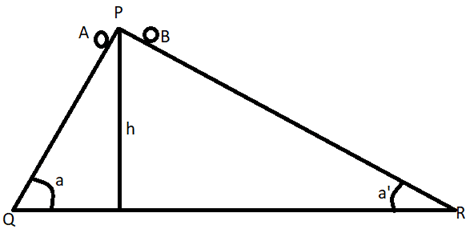
a) Both A and B reach the bottom at the same time
b) A reaches the bottom before B
c) A reaches the bottom before B
d) Depends on the angles a and a’
View Answer
Explanation: The energy equation for both the particles is given as;
(1/2) x m x v2 = m x g x h
g = Acceleration due to gravity
We can see from the above equation that inclination has no effect over the velocity when the surfaces in contact are smooth. Hence, the time taken to cover the same displacement (h) with equal velocities will also be equal. Therefore both the objects reach the bottom at the same time.
4. The kinetic energy of a body is ‘K’. If one-fourth of its mass is removed and velocity is doubled, the new kinetic energy will be _____
a) K
b) 3K
c) 4K
d) 9K/4
View Answer
Explanation: K = 1/2 x m x v2
New kinetic energy (K’) = 1/2 x m’ x v’2
m’ = 3m/4; [one-fourth of mass is removed]
v’ = 2v; [velocity is doubled]
K’ = 1/2 x (3m/4) x (2v) 2
= 1/2 x m x v x 3
= 3 x K
= 3K.
5. Which of the following is correct?
a) The kinetic energy of a system can be changed without changing the momentum
b) The kinetic energy of a system cannot be changed without changing the momentum
c) The momentum of a system cannot be changed without changing its kinetic energy
d) A system cannot have energy without having momentum
View Answer
Explanation: The kinetic energy of a system can be changed without changing the momentum. An explosion of a bomb is a good example of this phenomena. When a bomb explodes, kinetic energy is greatly increased but the momentum is conserved. This can be proved using vector algebra, by taking the vector sum of the velocities of all the particles in the explosion.
6. The momentum of a system can be changed without changing its kinetic energy.
a) True
b) False
View Answer
Explanation: Kinetic energy is a scalar quantity and momentum is a vector quantity. Hence, by changing the direction of the velocity and keeping the magnitude of velocity constant, the momentum of a system can be changed without changing its kinetic energy.
7. A person whose mass is 90kg is standing on a smooth horizontal platform. He throws a rock of mass 10kg horizontally on the same surface. If the distance between the person and the rock after 10 seconds is 10 m, what is the kinetic energy of the person?
a) 0.45 J
b) 4.5 J
c) 0.9 J
d) 0 J
View Answer
Explanation: Relative velocity of the rock after 10 s;
v1 + v2 = 10/10
= 1 m/s
v2 = 1 – v1
From the conservation of momentum, we have;
90 x v1 = 10 x (1 – v1); [Momentum = mass x velocity]
v1 = Velocity of person after 10 seconds
100 x v1 = 10
v1 = 0.1 m/s
KE = 1/2 x 90 x (0.1) 2
= 0.45 J.
8. Which of the following graphs denotes the variation of kinetic energy with velocity? Assume velocity on the x-axis and kinetic energy on the y-axis.
a) 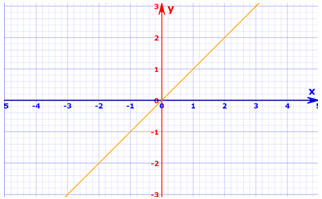
b) 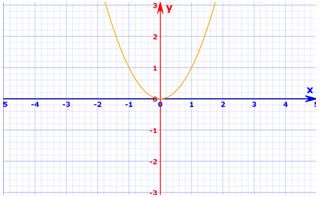
c) 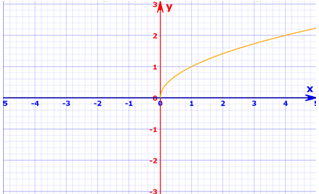
d) 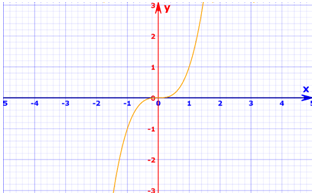
View Answer
Explanation: Kinetic energy is given by;
KE = (1/2) x m x v2
Kinetic energy (KE) is directly proportional to the square of the velocity of the particle.
9. The kinetic energy of a man is half that of a boy whose mass is half that of the man. When the man speeds up by 5 m/s, his kinetic energy doubles that of the boy’s kinetic energy. What is the initial velocity of the man?
a) 5 m/s
b) 10 m/s
c) 15 m/s
d) 20 m/s
View Answer
Explanation: The kinetic energy of man (initial) = KE
= KE’/2
The kinetic energy of man (final) = 2 x KE’
The kinetic energy of boy = KE’
Mass of man = M
Mass of boy = m
= M/2
v = Initial velocity of man
v’ = Initial velocity of boy
(1/2) x M x v2 = (1/2) x m x v’2
= (1/2) x M/2 x v’2
Therefore; v = v’/20.5
(1/2) x M x (v+5) 2 = 2 x (1/2) x m x v’2
= 2 x (1/2) x M/2 x (2 x v2)
(v+5) 2 = 4 x v2
v + 5 = 2 x v
v = 5m/s.
10. What kinetic energy should be imparted to an object of mass “m” to raise it to a height of 1000 meters? (Take g = 10 m/s2)
a) 10m J
b) 100m J
c) 1000m J
d) 10000m J
View Answer
Explanation: Mass of object = m
From the conservation of energy;
1/2 x m x v2 = m x g x h
= m x 10 x 1000
= 10000m J
11. For an object of 1kg mass to escape the gravitational force of the earth, the kinetic energy imparted to it from the surface of the earth is approximately _____
a) 5600 J
b) 10200 J
c) 11200 J
d) 12000 J
View Answer
Explanation: Escape velocity of earth from the surface (v) = 11.2 km/s
= 11,200 m/s
KE = (1/2) x m x v2
= (1/2) x 1 x 11,200
= 5600 J.
12. A body is projected up vertically with a velocity of 60 m/s. What percentage of its initial kinetic energy is converted into potential energy after 3 seconds? (Take g = 10 m/s2)
a) 25 %
b) 50%
c) 75%
d) 100%
View Answer
Explanation:Initial KE = (1/2) x M x (60 x 60)
= 1800 x M
From Newton’s laws;
s = ut + (1/2)gt2
= (60 x 3) – (10 x 3 x 3)/2
= 180 – 45
= 135 m
Potential energy at 135m (PE) = M x g x s
= 1350 x M
So KE at 135m = Initial KE – PE
= 1800M – 1350M
= 450M J; This is 25% of the initial kinetic energy. Hence, 75% is converted into potential energy.
13. A body is falling freely from rest from a height of 100m. The ratio of kinetic energy after 2 and 5 seconds is _____
a) 2:5
b) 4:25
c) 25:4
d) 5:2
View Answer
Explanation: From newtons law;
v1 = u + gt1
v1 = 2g
v2 = u + gt2
v2 = 5g
KE1 : KE2 = v12 : v22
= 4 : 25.
14. A particle of mass 1kg is moving with a velocity of 20ms-1 then its kinetic energy is ____
a) 200 J
b) 200 kgm2s-1
c) 200 kgm-1s-2
d) 200 kgm-1s-1
View Answer
Explanation: Kinetic energy of a particle is given by 0.5*m*v2 i.e. 0.5*1*202 = 200 J. Joules can also be written as kgm-2s-2.
15. At the highest point of a projectile’s trajectory, the kinetic energy is minimum and potential energy is maximum.
a) True
b) False
View Answer
Explanation: At the highest point of a projectile’s trajectory, the potential energy is maximum because height is directly proportional to potential energy. The kinetic energy is minimum because velocity vectors has the least magnitude.
16. A pendulum of mass 2kg is given an energy of 200J then the maximum height it will reach is _____
a) 25m
b) 20m
c) 15m
d) 10m
View Answer
Explanation: Let the value of g = 10ms-2. At the highest point, the kinetic energy gets converted in to potential energy so, 200 [kgm2s-2] = 2*10*h [kgms-2]. This gives h = 10m.
17. What work must be done to stop a bullet moving with a velocity of 2000ms-1 and having a mass of 50g?
a) 105J
b) 106J
c) 104J
d) 107J
View Answer
Explanation: Work done against a body is the energy lost (kinetic) by it. Energy formula is 0.5*m*v2. So, 0.5*(50/1000)*20002 = 105.
18. An external force is acting on a system, the work done on the system is change in its kinetic energy.
a) True
b) False
View Answer
Explanation: The total work done on a body or system is the change in its total kinetic energy when an external force is applied on it.
19. A particle of mass 200g is thrown vertically upwards with a speed of 10ms-1, the work done by force of gravity while the particle goes up is given by _____
a) 0.5J
b) 5J
c) 10J
d) 15J
View Answer
Explanation: The maximum height attained by particle is given by u2/(2*g). So total work done would be gain in potential energy i.e. m*g*h = m*g*(u2/(2*g))= (200/1000)*10*(102/20) = 10.
20. If a solid sphere of mass 200g and radius 20cm is rotating with an angular velocity of 5 rad s-1, its rotational kinetic energy is _____
a) 0.06J
b) 0.04J
c) 0.03J
d) 0.004J
View Answer
Explanation: Rotational kinetic energy is given by 0.5*I*Ω2. I of a solid sphere is given by (2/5)*m*r². So, rotational kinetic energy is 0.5*0.4*(200/1000)*(20/100)2*52 = 0.04J.
21. For the given diagram, choose the correct statement. Consider frictional forces absent.
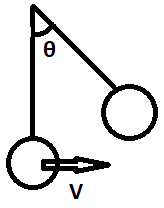
a) Kinetic energy is being permanently lost
b) There is no energy loss
c) Initially, the particle has maximum potential energy
d) Potential energy is being permanently gained
View Answer
Explanation: The frictional forces are absent, so there is no external force except gravity. Gravity is a conservative force. The potential energy is being temporarily gained when particle goes up while it loses it when it goes down. Under a conservative force, the total K.E + total P.E is constant.
22. Which of the following cannot be called energy?
a) Momentum
b) Stress energy
c) Chemical potential
d) Strain energy
View Answer
Explanation: Stress energy, Chemical potential and Strain energy are all energies and can be expressed in joules while momentum doesn’t fall under energy category.
23. If mass (m) is doubled and velocity (v) is halved then _____
a) Kinetic energy decreases by half
b) Potential decreases by half
c) Momentum decreases by half
d) Potential and kinetic energy remains unchanged
View Answer
Explanation: Momentum doesn’t change i.e. (2m)*(v/2). K.E decreases by half while P.E becomes twice the original value.
Sanfoundry Global Education & Learning Series – Physics – Class 11.
To practice all chapters and topics of class 11 Physics, here is complete set of 1000+ Multiple Choice Questions and Answers.
If you find a mistake in question / option / answer, kindly take a screenshot and email to [email protected]
- Practice Class 11 - Biology MCQs
- Practice Class 12 - Physics MCQs
- Check Class 11 - Physics Books
- Practice Class 11 - Mathematics MCQs
- Practice Class 11 - Chemistry MCQs
